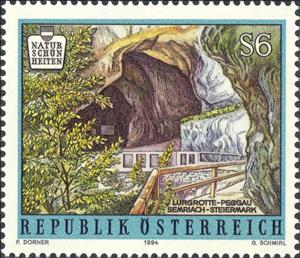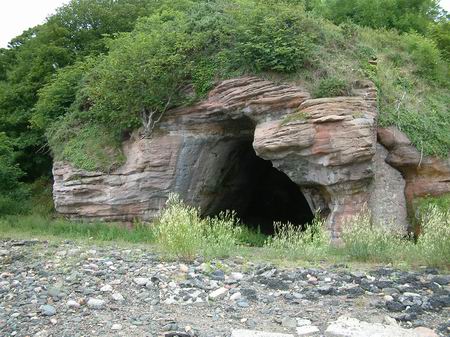Stamp: Lurgrotte (Cave), Peggau - Semriach, Styria (Austria 1994)
Lurgrotte (Cave), Peggau - Semriach, Styria (Austria 1994)
29 April (Austria ) within release Nature goes into circulation Stamp Lurgrotte (Cave), Peggau - Semriach, Styria face value 6 Austrian schilling
| Stamp Lurgrotte (Cave), Peggau - Semriach, Styria in catalogues | |
|---|---|
| Michel: | Mi:AT 2123 |
| Stamp Number: | Sn:AT 1496 |
| Yvert et Tellier: | Yt:AT 1952 |
Stamp is horizontal format.
Stamp Lurgrotte (Cave), Peggau - Semriach, Styria it reflects the thematic directions:
A landscape is the visible features of an area of land, its landforms and how they integrate with natural or man-made features. A landscape includes the physical elements of geophysically defined landforms such as (ice-capped) mountains, hills, water bodies such as rivers, lakes, ponds and the sea, living elements of land cover including indigenous vegetation, human elements including different forms of land use, buildings and structures, and transitory elements such as lighting and weather conditions. Combining both their physical origins and the cultural overlay of human presence, often created over millennia, landscapes reflect a living synthesis of people and place that is vital to local and national identity. The character of a landscape helps define the self-image of the people who inhabit it and a sense of place that differentiates one region from other regions. It is the dynamic backdrop to people’s lives. Landscape can be as varied as farmland, a landscape park, or wilderness. The earth has a vast range of landscapes, including the icy landscapes of polar regions, mountainous landscapes, vast arid desert landscapes, islands and coastal landscapes, densely forested or wooded landscapes including past boreal forests and tropical rainforests, and agricultural landscapes of temperate and tropical regions.
A cave or cavern is a natural void in the ground, specifically a space large enough for a human to enter. Caves often form by the weathering of rock and often extend deep underground. The word cave can refer to smaller openings such as sea caves, rock shelters, and grottos, that extend a relatively short distance into the rock and they are called exogene caves. Caves which extend further underground than the opening is wide are called endogene caves


